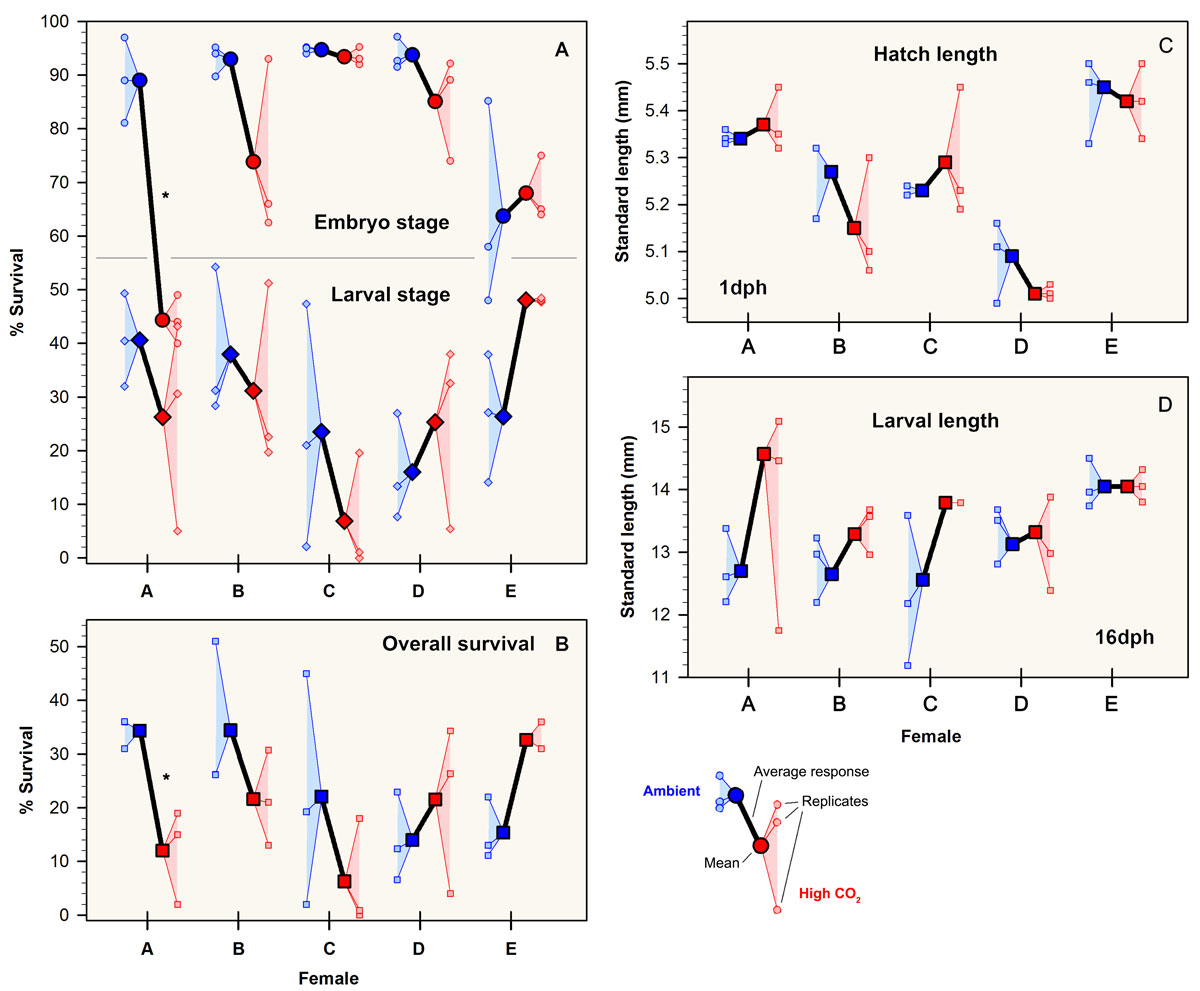28 November 2017. The Journal of Experimental Marine Biology and Ecology just published the latest study by our group looking at differences in the CO2 sensitivity of Atlantic silverside offspring stemming from different mothers. Congratulations to Jacob Snyder for his first peer-reviewed publication.
Among the highlights of the study:
- Offspring produced by different females varied in their sensitivity to high CO2 conditions.
- Specific fatty acids in eggs were correlated to the log-transformed CO2 response ratio of embryo survival and hatch length.
- Maternal provisioning might be an additional determinant of CO2 sensitivity in fish early life stages.
Citation:
Snyder, J.T.*, Murray, C.S.*, and Baumann, H. (2018)
Potential for maternal effects on offspring CO2 sensitivities in the Atlantic silverside (Menidia menidia).
Journal of Experimental Marine Biology and Ecology 499:1-8
